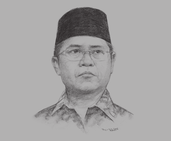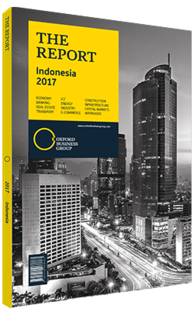Rudiantara, Minister of Communication and IT, on the impact of technology on the country and its population: Viewpoint

Communication, education technology and informatics are three interrelated terms that should go hand-in-hand. Not only are they beneficial for the study, planning, application and production of communi-cations media for instruction but, more significantly, they contribute further to the acceleration of the production base, especially with respect to human resources. The synergy of the fields of communication, informatics and education cannot be separated. These fields should work together, be mutually fulfilling and strengthen one other, so that their synergy creates a national investment and asset.
This investment involves high-tech and high-quality human resources. The only way this can be provided is through education. The collaboration between high-tech and high-quality education will foster creative and tenacious entrepreneurs, and skilful and competent human resources. As our nation is not a homogeneous society, the challenge lies in uniting the different cultures, languages, religions, ethnicities and customs in this archipelago. Besides that, the geography of Indonesia – with more than 17,000 islands standing on the ring of fire, one of the longest coastal lines in the world and flanked by the Pacific and Indian Oceans – presents another great challenge. Securing our seas and oceans from poaching has become a national issue, as many fishermen from neighbouring countries have been caught committing this crime. Additionally, important information about tsunamis, tidal waves, earthquakes and volcanic eruptions are now dispersed virally thanks to the media. I would argue that communication and education are the keys to safeguard and preserve Indonesian pluralism or Bhinneka Tunggal Ika (Unity in Diversity), as it is known. In line with this, the ministry has launched the Palapa Ring programme to deliver broadband services to all the regencies and cities in Indonesia by 2019, so that communicating real-time information is no longer an expensive and exclusive thing. Once this project is complete, people in every part of the country will have the same opportunity to access the internet. The Palapa Ring programme is the first project in the ICT sector to be carried out under a public-private partnership, and it is getting a lot of interest from potential financiers.
Another important aspect we need to ponder is that, demographically speaking, Indonesia is a big potential market. Although some say that the consumers of Indonesian society support the economic growth of the state, I believe that we can be more innovative. Many homemakers are becoming extremely creative in generating money for household income using technology. They are using social media apps to promote foods, handicrafts and other merchandise they make. Traditional selling is no longer seen as the only effective communicative medium. It is inevitable that all retailers and wholesalers will eventually go online. In addition, it allows people to shop without worrying about traffic congestion. This, I would argue, involves communication technology as well as education. This simple case exemplifies how online selling and marketing can potentially act as an impetus for small and medium-sized enterprises (SMEs).
Together with the Ministry of SMEs, the Ministry of Communication and IT has launched a Go Digital scheme to empower SMEs, and will provide hosting for 1-2m of them. I think education and education technology may play a vital role in this. Our work focuses on two aspects: the efficient and equitable deployment of broadband. To achieve this we need innovation, not only from the regulator but also from sector players. With better access to the internet, the country can raise its competitiveness in innovation and digital content. Indonesia needs to become an important player in the field and not just a market. If we strengthen and develop the ICT sector, our network and human resources will become more competitive, serving as crucial developers of our growth.
You have reached the limit of premium articles you can view for free.
Choose from the options below to purchase print or digital editions of our Reports. You can also purchase a website subscription giving you unlimited access to all of our Reports online for 12 months.
If you have already purchased this Report or have a website subscription, please login to continue.

